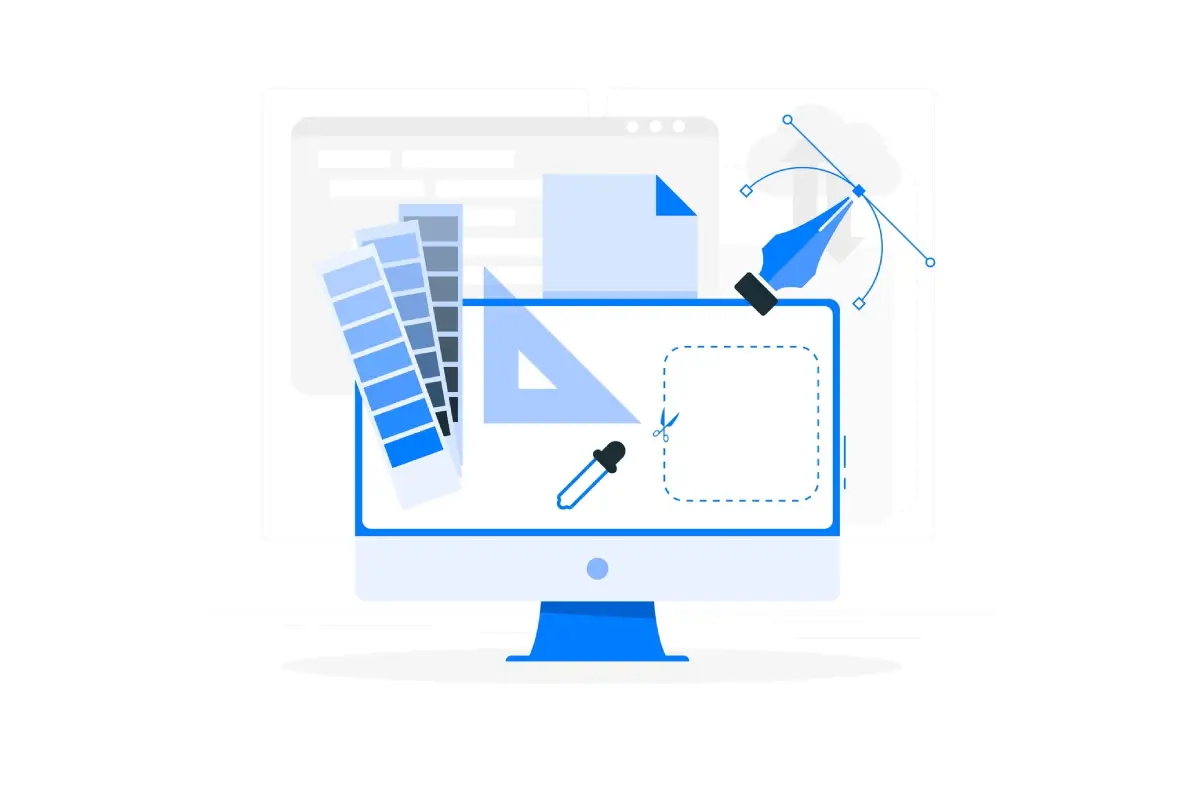Packaging Design Trends: How Visuals Influence Consumer Purchase Decision
Packaging has grown from a functional necessity to a powerful marketing tool in today’s fiercely competitive market. With countless products competing for consumer attention, the right packaging can make all the difference between a product that flies off the shelves and one that stays unnoticed.
Packaging design trends significantly influence consumer purchase decisions by catching the eye and communicating brand values, enhancing user experience, and creating emotional connections. As consumers become more discerning, businesses must adapt their packaging strategies to meet changing preferences and stand out in a crowded marketplace.
Key Packaging Design Trends
Minimalism
Definition and Characteristics
Minimalism in packaging design focuses on simplicity and functionality, leaving out unnecessary elements to highlight clean lines, white space, and a restrained color palette. This trend emphasizes clarity and straightforwardness, allowing the product and brand message to shine without distraction. Minimalistic designs often use simple typography, limited color schemes, and essential graphics, creating a sleek and modern aesthetic. An example of this is the use of an animated text generator to create subtle, clean animations that enhance the design without overwhelming it.
Examples of Brands Using Minimalistic Design:
- Apple – Known for its clean and uncluttered packaging, Apple uses minimalistic design to reflect its brand of simplicity and innovation. The packaging typically features a sleek white box with a prominent product image and minimal text.
- Muji – This Japanese brand embraces minimalism across its product range, with packaging that is plain, functional, and devoid of excessive branding. Muji’s packaging often features natural materials and a neutral color palette, supporting its commitment to simplicity and sustainability.
- Aesop – The skincare brand uses minimalistic packaging to convey a sense of luxury and purity. Their brown glass bottles with simple, monochrome labels highlight the product’s natural ingredients and scientific approach to skincare.
Psychological Impact on Consumers:
- Clarity and Focus – Minimalistic packaging helps consumers quickly understand the product’s purpose and benefits, reducing cognitive load and making decision-making easier. Simplicity communicates transparency and honesty, building trust.
- Perceived Value – Products with minimalistic designs often appear more premium and sophisticated. The clean, elegant look can enhance the perceived value of the product, making consumers more willing to pay a higher price.
- Emotional Appeal – Minimalism can evoke feelings of calm and serenity, contrasting with the often overwhelming visual noise of crowded store shelves. This emotional response can create a positive association with the brand and increase consumer loyalty.
- Brand Identity – Consistent use of minimalistic design helps strengthen brand identity and recognition. Consumers can easily identify the brand through its distinctive, simple packaging, boosting brand loyalty and repeat purchases.
Sustainability
Rise of Eco-Friendly Packaging Materials
The shift towards sustainable packaging materials is driven by growing environmental awareness and consumer demand. Common eco-friendly options include:
- Biodegradable Plastics – Made from natural materials like cornstarch or sugarcane.
- Recycled Paper and Cardboard – Reduces the need for new materials.
- Plant-Based Materials – Such as mushroom-based packaging, which is compostable.
Case Studies of Companies Adopting Sustainable Packaging:
- Lush – Uses minimal packaging and recyclable materials, with a take-back program for containers.
- Patagonia – Utilizes recycled content and clear recycling instructions, aligning with its environmental mission.
- IKEA – Transitioning to mushroom-based packaging, reducing reliance on Styrofoam.
Consumer Preference for Sustainable Products:
- Environmental Consciousness – Consumers prioritize eco-friendly options, often willing to pay more.
- Brand Loyalty – Sustainable practices enhance brand loyalty and customer trust.
- Influence on Purchase Decisions – Many consumers consider the environmental impact of packaging, especially younger generations.
Adopting sustainable packaging meets consumer expectations and strengthens brand image and loyalty, positioning companies as leaders in environmental responsibility.
Bold Colours and Graphics
The Use of Vibrant Colors and Striking Visuals
Bold colors and striking visuals are key elements in modern packaging design. They create immediate visual impact and help products stand out on crowded shelves. Utilizing an AI art generator can help designers create vibrant and dynamic visuals that attract consumer attention. This trend involves the use of bright, contrasting colors, dynamic patterns, and eye-catching graphics to attract consumer attention.x
How Colors and Graphics Attract Attention
- Visual Impact – Bright colors and bold graphics instantly grab attention, making products more noticeable.
- Emotional Influence – Different colors evoke various emotions. For example, red can create a sense of urgency, while blue can evoke trust and calmness. Graphics that tell a story or evoke nostalgia can also significantly influence consumer behavior.
- Brand Recognition – Consistent use of specific colors and graphics helps reinforce brand identity, making it easier for consumers to recognize and remember the brand. This consistency is crucial when consumers first preview product packaging and then see the product on the shelf.
Examples of Effective Use in Packaging
- Coca-Cola – The iconic red and white color scheme combined with the dynamic wave design makes Coca-Cola packaging instantly recognizable and memorable.
- Tiffany & Co. – The distinctive Robin’s egg blue box is synonymous with the brand, conveying luxury and elegance without the need for additional graphics. The color alone is enough to make a lasting impression.
- Oatly – The oat milk brand uses bold typography and playful graphics on its packaging, creating a fun and modern look that appeals to a younger audience.
Using bold colors and compelling visuals, brands can capture consumer attention, evoke specific emotions, and strengthen brand recognition, ultimately influencing purchase decisions.
Personalization
Customized Packaging for Individual Consumers
Personalized packaging involves creating custom packaging designs for individual consumers or specific consumer segments. This approach makes the product feel unique and special, catering to the personal preferences and tastes of each customer. Brands can take this concept further through custom packaging with Zenpack, where tailored designs are crafted to create memorable unboxing experiences that resonate with customers on a deeper level. Effective packaging design trends can significantly impact consumer purchase decisions, making it crucial for CPG staffing to focus on visual appeal and brand communication. Customization can range from adding individual names or messages to designing packaging that reflects specific occasions or events.
Technological Advancements Enabling Personalization
Advancements in digital printing and data analytics have made it easier and more cost-effective for brands like beef jerky packaging to offer personalized packaging. Digital printing allows for short runs of customized designs, making it feasible to create unique packaging for individual orders.
Additionally, data analytics enables brands to gather insights into consumer preferences and behaviors, allowing for more targeted and effective personalization strategies. Brands can now use online platforms to allow consumers to preview product packaging before finalizing their purchase, ensuring that the personalized design meets their expectations.
Consumer Perception and Loyalty
- Enhanced Experience – Personalized packaging creates a memorable unboxing experience, making consumers feel valued and appreciated. This positive experience can lead to stronger emotional connections with the brand.
- Increased Engagement – Consumers are more likely to engage with brands that offer personalized products. Custom packaging encourages social sharing, as consumers are often excited to show unique items on social media.
- Brand Loyalty – Personalization creates a sense of loyalty and attachment to the brand. When consumers feel that a brand understands and caters to their individual needs, they are more likely to make repeat purchases and become long-term customers.
Transparency and Honesty
Clear Packaging to Show the Product
Clear packaging allows consumers to see the product before making a purchase, which helps to set accurate expectations. This transparency can build trust as it assures customers that there is nothing hidden about the product. It also highlights the quality and authenticity of the product, making it more appealing to potential buyers.
Labels and Information Transparency
Transparent labels provide detailed information about the product, including ingredients, sourcing, manufacturing processes, and potential allergens. Honest labeling practices ensure that consumers are fully informed about what they are buying. Brands are increasingly adopting innovative tools like the best QR Code Generator to elevate transparency, allowing consumers to scan from packaging and instantly access comprehensive product details, sourcing information, and even sustainability certifications. This transparency extends to providing clear and truthful marketing messages, avoiding exaggerated claims or deceptive visuals.
Impact on Trust and Consumer Decisions
- Increased Trust – When consumers can see the product and access all relevant information, they are more likely to trust the brand. This trust is crucial for building long-term customer relationships.
- Informed Choices – Transparent packaging and labels empower consumers to make informed purchasing decisions. They can assess the quality, suitability, and value of the product more accurately.
- Customer Loyalty – Brands that prioritize transparency are often perceived as more honest and ethical. This perception can enhance brand loyalty, as consumers prefer to support companies that align with their values.
- Competitive Advantage – In a market where consumers are increasingly skeptical of marketing claims, transparency can serve as a significant differentiator. Brands that are open and honest about their products can stand out from competitors and attract a more loyal customer base.
Psychological Impact of Packaging Design
Packaging design plays a crucial role in influencing consumer behavior by appealing to their psychological responses. It’s not just about protecting the product; it’s about making a lasting impression, evoking emotions, and shaping brand perception. Here’s a closer look at how packaging design affects consumers psychologically:
First Impressions
The Role of Packaging in Creating a Strong First Impression
Packaging is often the first point of contact between a product and a consumer. A well-designed package can immediately attract attention and create a positive impression. This initial encounter can significantly influence a consumer’s perception of the product’s quality and desirability.
How Initial Visual Appeal Influences Buying Decisions
Attractive packaging can draw consumers’ attention and make a product stand out among competitors. If the packaging is visually appealing and communicates the product’s benefits effectively, it can prompt an impulsive purchase. The initial visual appeal can lead consumers to perceive the product as more valuable and worth trying.
Emotional Connection
How Packaging Design Can Evoke Emotions
Packaging design elements such as color, shape, and graphics can evoke specific emotions. For example, warm colors like red and yellow can create feelings of excitement and happiness, while cool colors like blue and green can evoke calmness and trust. Additionally, tactile elements like texture and finish can enhance the sensory experience, further influencing emotions.
The Connection Between Emotional Response and Brand Loyalty
When packaging design elicits positive emotions, it creates a memorable experience for consumers. This emotional connection can lead to increased brand loyalty, as consumers are more likely to repurchase products that make them feel good. Emotional packaging can also encourage word-of-mouth recommendations and social media sharing, amplifying brand reach and loyalty.
Brand Perception
The Role of Packaging in Shaping Brand Identity
Packaging is a critical component of a brand’s identity. Consistent use of colors, fonts, and design elements across all packaging helps strengthen the brand’s image and values. Effective packaging communicates the brand’s personality and differentiates it from competitors.
How Consistency in Design Enhances Brand Recognition
Consistency in packaging design ensures that consumers can easily recognize the brand across different products and channels. This familiarity builds trust and reinforces brand recognition. When consumers repeatedly encounter the same visual elements, they develop a stronger connection to the brand, leading to increased loyalty and preference.
Effective packaging design goes beyond mere aesthetics; it deeply influences consumer perceptions and behaviors. Well-designed packaging enhances consumer trust and loyalty by creating strong first impressions, evoking emotions, and reinforcing brand identity. As brands continue to innovate in packaging design, understanding its psychological impact will be key to attracting and retaining customers in a competitive market.




Leave a Reply